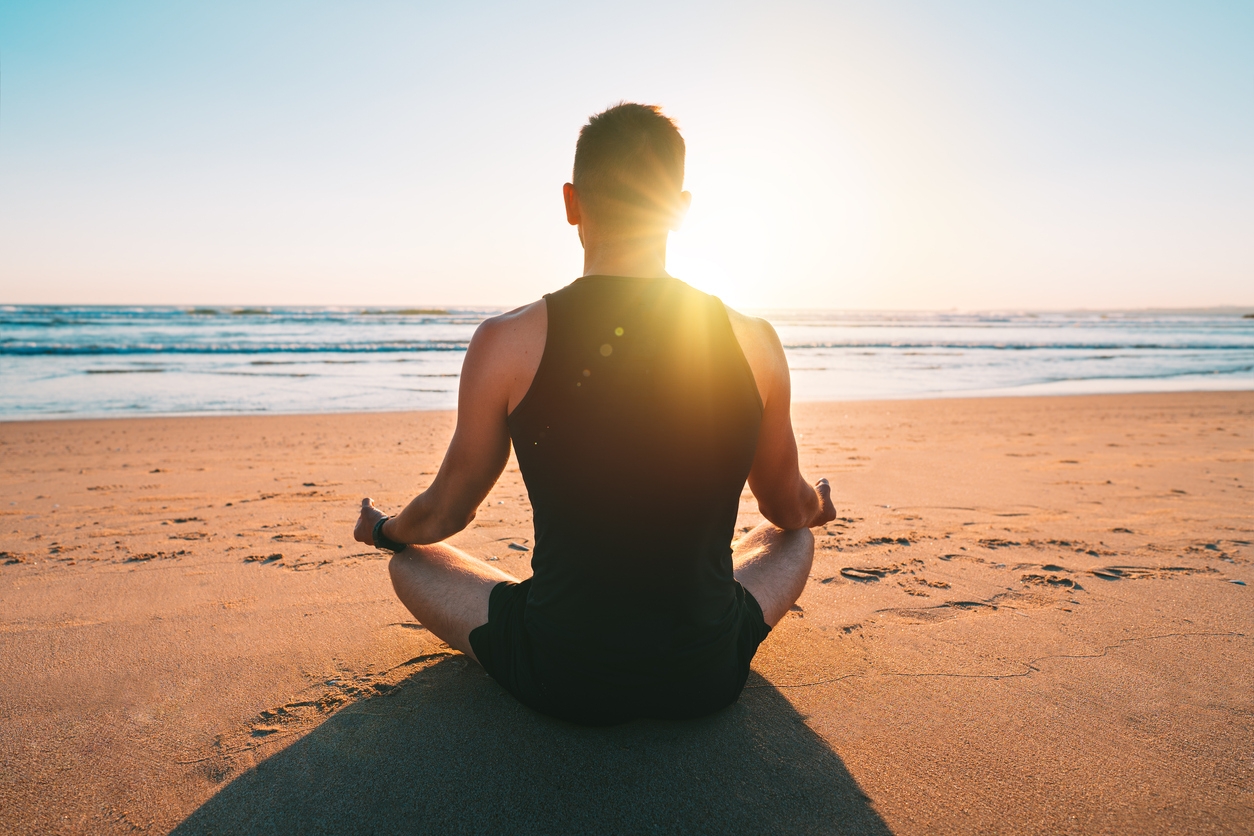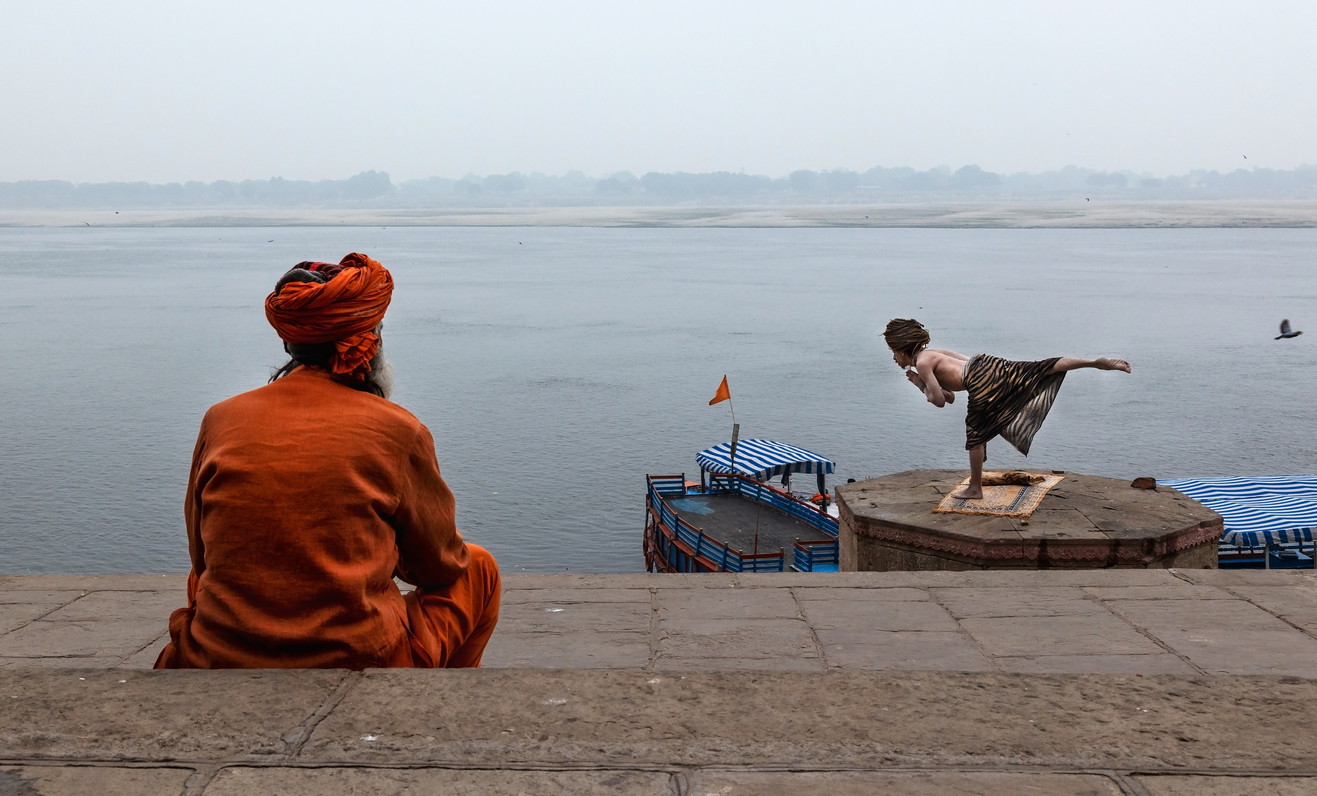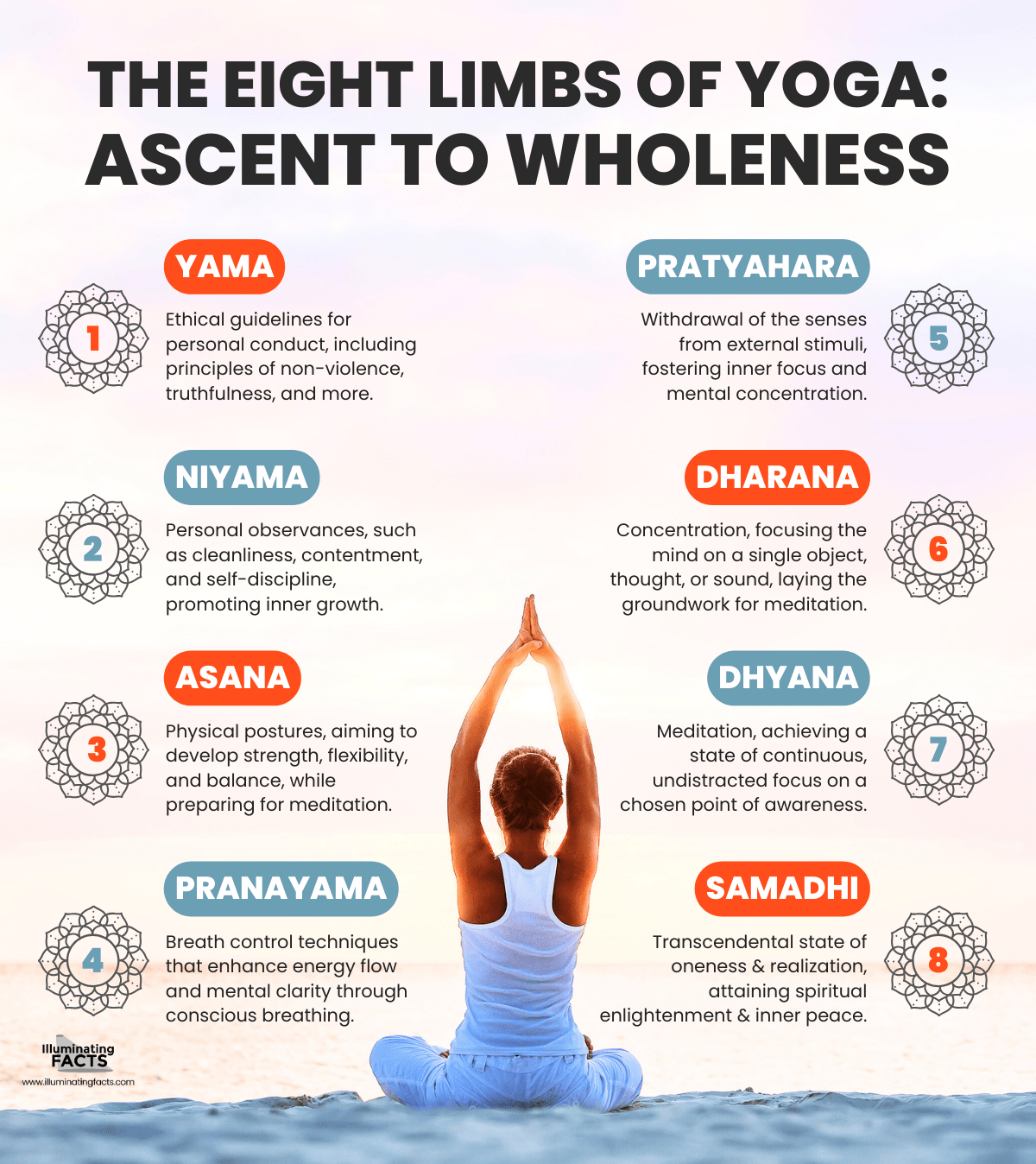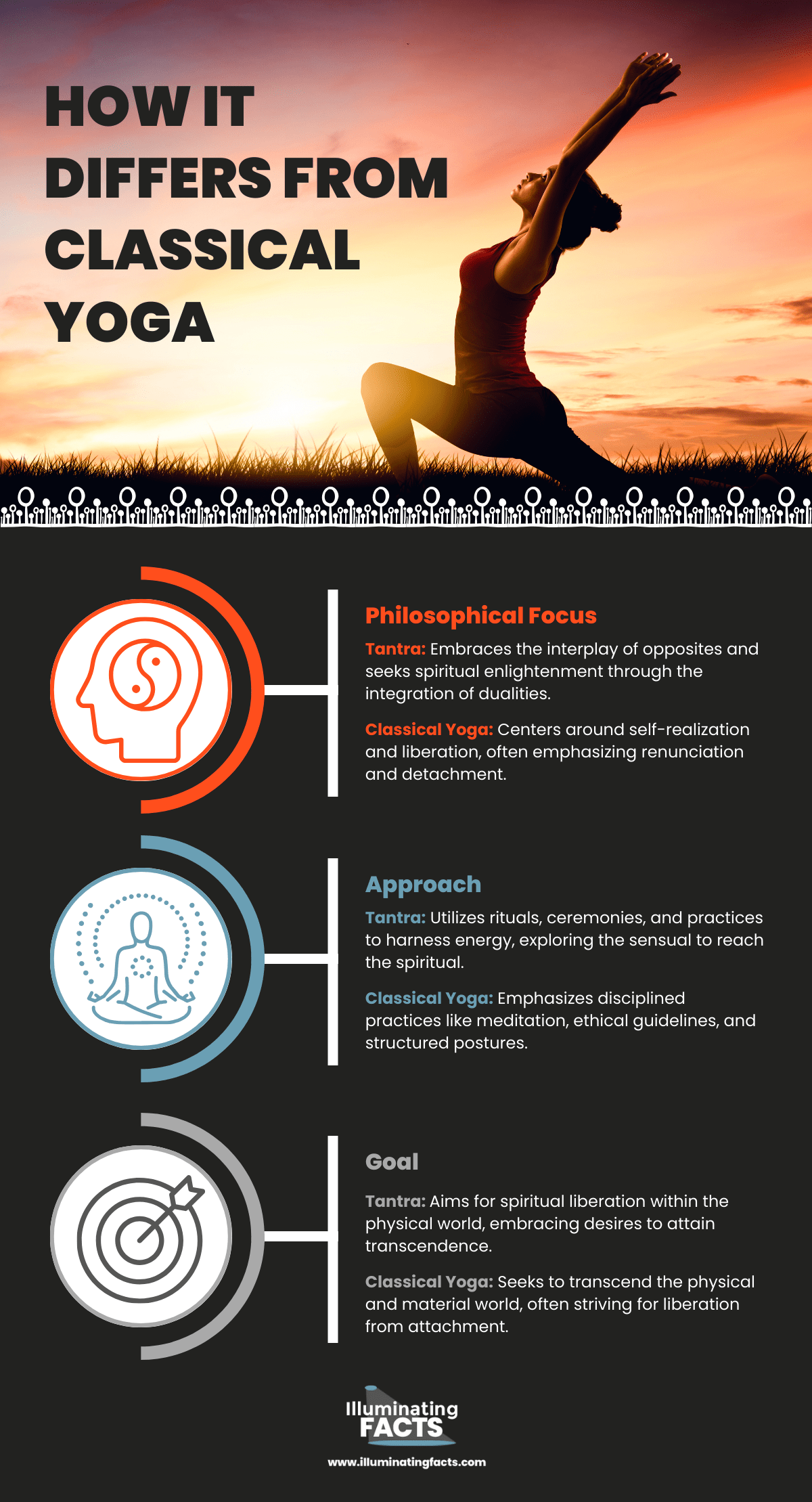When we say the word yoga, the images of people twisting their bodies into uncomfortable positions inadvertently pop into mind. But beyond these positions and asanas, yoga actually is a spiritual discipline that focuses on bringing harmony between the body and mind. This ancient practice, famous for its calming poses and mindful breathing, comes with a fascinating story that spans across decades.
In this post, we’ll take you from the ancient days to the modern era, showing you how yoga has weaved its way through history, connecting our bodies, minds, and spirits in a unique way.
Tracing the Origins
There is no consensus on when or where yoga actually originated. However, we can classify its timeline into three distinct eras:
Era | Ancient Roots | Classic Era | Medieval Period | Modern Era |
Key Aspect | Early traces appear in the Indus Valley Civilization | The foundational text "Yoga Sutras" by Patanjali emerges | Schools like Vedanta develop | Yoga undergoes a renaissance with global exposure |
Practice | Yogic principles evolve in the Upanishads | Hatha and Bhakti yoga gain prominence | Tantra yoga | Ashtanga, and Vinyasa yoga |
Focus | Meditation and self-realization | Postures (asanas) and breath control (pranayama). Developing a personal connection with the divine | physical practices with spiritual growth | accessibility, blending traditional practices with modern lifestyles and wellness trends |
The Ancient Roots
Tracing back to antiquity, yoga’s origins are intertwined with diverse cultures and spiritual traditions. Emerging from ancient civilizations like the Indus Valley and Egypt, yoga’s essence evolved through the ages. [1]
In these ancient times, yoga wasn’t just about the postures we associate with it today. It was a holistic approach to existence. Through the confluence of meditation, breath control, and ethical principles, these early yogis sought a profound union of body, mind, and soul.
Text | Rigveda | Upanishads | Bhagavad Gita |
Focus | Contains early references to mental and physical disciplines, laying the foundation for yogic principles. | Delve deeper into yogic philosophy, introducing meditation, self-realization, and the concept of the transcendent Self. |
|
Teachings | Yoga is intertwined with rituals, cultivating self-discipline, meditation, and self-awareness as key components of spiritual growth. | Meditation becomes integral to achieving union with the divine, nurturing the groundwork for Raja and Jnana yogas. | Teachings on duty, detachment, and self-mastery contribute to the foundation of yogic ethics and the union of self and divinity. |
The Vedic Period
During the Vedic period yoga was documented in the sacred texts of the Rigveda. This era marked a significant milestone as yoga’s focus shifted towards spiritual awakening and self-discovery. Practices like meditation, breath control, and ritualistic ceremonies were intrinsic components of this period.
As the Vedic texts delved deeper into the intricacies of yoga, they illuminated the path towards understanding the self and the universe. [2] The Vedic period set the stage for yoga’s continued evolution, leaving an indelible mark on its philosophy and practices.
The Upanishads and Yoga
The Upanishads are ancient texts brimming with spiritual insights. They played a pivotal role in shaping the philosophical landscape of yoga.
These texts went beyond the physical aspects of the practice, delving into the depths of metaphysical understanding. The Upanishads imparted the timeless wisdom that continues to resonate through modern yoga, nurturing the integration of body, mind, and consciousness. [3]
Nestled within the heart of the Upanishads’ teachings is the concept of the “Atman” – the soul. A cornerstone of yoga philosophy, the exploration of the Atman unveils the essence of self-realization and interconnectedness. They emphasized the Atman as the unchanging, eternal core that resides within every individual. By comprehending this essence, we gain insight into the interconnected nature of all existence. It ignites a transformative perspective that continues to guide yoga practitioners on their inward journey.
The Bhagavad Gita’s Influence
The Bhagavad Gita’s profound influence on yoga’s evolution is undeniable. Nestled within the epic Mahabharata, its verses echo timeless wisdom, guiding spiritual seekers across eras.
The Gita transcends mere physical practice, encapsulating a holistic way of life that surpasses cultural bounds. [4] Embedded within the it’s verses are teachings that breathe life into yoga. The insights offer a roadmap for balanced living, exploring self-realization, selfless action, and interconnectedness.
From Karma Yoga’s selfless actions to Bhakti Yoga’s devotion, Jnana Yoga’s knowledge, and Dhyana Yoga’s meditation, the Gita’s teachings embrace a range of seekers. This universal approach underscores yoga’s transformative power for all.
The Classical Era
During the Classical Era, yoga blossomed into a comprehensive system encompassing diverse paths and practices. This epoch witnessed the crystallization of yogic philosophies, creating a framework that guided seekers towards self-realization and spiritual evolution.
Patanjali’s Yoga Sutras
At the heart of yogic philosophy stands Patanjali’s Yoga Sutras, a seminal text that illuminates the path to inner awakening. [5] Patanjali, a sage of antiquity, occupies an esteemed place in the annals of yogic history.
Comprising succinct aphorisms, his work encapsulates the essence of yoga’s profound wisdom. Through his Yoga Sutras, Patanjali codified the philosophy and practices that underpin modern yoga. His teachings not only enlighten the path of self-discovery but also underscore the universality of yoga as a transformative force.
The Eight Limbs of Yoga: Ascent to Wholeness
Central to Patanjali’s teachings are the Eight Limbs of Yoga, an intricate framework designed to guide practitioners towards holistic well-being and self-realization.
| Limbs | Description |
| Yama | Ethical guidelines for personal conduct, including principles of non-violence, truthfulness, and more. |
| Niyama | Personal observances, such as cleanliness, contentment, and self-discipline, promoting inner growth. |
| Asana | Physical postures, aiming to develop strength, flexibility, and balance, while preparing for meditation. |
| Pranayama | Breath control techniques that enhance energy flow and mental clarity through conscious breathing. |
| Pratyahara | Withdrawal of the senses from external stimuli, fostering inner focus and mental concentration. |
| Dharana | Concentration, focusing the mind on a single object, thought, or sound, laying the groundwork for meditation. |
| Dhyana | Meditation, achieving a state of continuous, undistracted focus on a chosen point of awareness. |
| Samadhi | Transcendental state of oneness and realization, attaining spiritual enlightenment and inner peace. |
Each limb forms a rung on the ladder of spiritual evolution, fostering a balanced existence while nurturing the connection between the individual and the cosmos.
The Medieval Period
The annals of the medieval period mark a pivotal chapter in the evolution of yoga. During this era, the practice underwent a tapestry of transformations, intertwining with the cultural and philosophical currents of the time. As societies shifted and diversified, with major civilizations rising and falling, yoga too adapted to new contexts while preserving its core tenets.
Tantra Yoga
Tantra yoga is a profound facet of yogic tradition in the medieval period. It is a path of spirituality that navigates the subtle connections between the physical and the spiritual, often cloaked in mystery. This esoteric practice delves into the interplay of energies, awakening a heightened awareness of the world within and beyond. Drawing inspiration from ancient texts like the Tantras, Tantra Yoga invites practitioners to explore the integration of body, mind, and soul in profound ways. [6]
How it Differs from Classical Yoga
Aspect | Tantra | Classical Yoga |
Philosophical Focus | Embraces the interplay of opposites and seeks spiritual enlightenment through the integration of dualities. | Centers around self-realization and liberation, often emphasizing renunciation and detachment. |
Approach | Utilizes rituals, ceremonies, and practices to harness energy, exploring the sensual to reach the spiritual. | Emphasizes disciplined practices like meditation, ethical guidelines, and structured postures. |
Goal | Aims for spiritual liberation within the physical world, embracing desires to attain transcendence. | Seeks to transcend the physical and material world, often striving for liberation from attachment. |
The Influence of Buddhism and Jainism
Intricately woven into the tapestry of yoga’s evolution is the profound influence of Buddhism and Jainism. Their ancient spiritual paths cast a transformative light on the practice, shaping its course in unique ways. [7]
These religions infused yoga with contemplative ideals, giving rise to a more profound integration of meditation and introspection within the yogic framework.
Specific Techniques and Philosophies They Introduced
Within the embrace of Buddhism and Jainism, specific techniques and philosophies emerged.
- Mindfulness meditation
- Non-violence (Ahimsa)
- Self-discipline
- Non-Absolutism (Anekantavada)
- Fasting and Austerity
- Equanimity and Compassion
- Non-Attachment (Anatta)
Yoga in the Modern World
Now let’s transition to the present day and explore how yoga has seamlessly integrated into the bustling tapestry of the modern world. From serene studios to online platforms, the contemporary landscape offers diverse avenues for individuals to explore the physical, mental, and spiritual dimensions of this ancient practice.
The Western Influence
The introduction of yoga to the Western world marked a pivotal turning point in its history. As western societies became increasingly fascinated by the idea of holistic well-being, yoga’s philosophy and practice found fertile ground to flourish.
Today, yoga classes range from vigorous vinyasa flows to restorative sessions, catering to a spectrum of preferences and goals. The western influence has not only expanded yoga’s horizons but also enriched its tapestry with new threads of cultural diversity.
How Yoga Was Introduced to the Western World
The journey of yoga from the East to the West is a narrative of curiosity, cross-cultural exploration, and a quest for deeper understanding. It began with scholars and seekers who ventured into India, drawn by its ancient wisdom and spiritual practices. The iconic moment of yoga’s introduction is often attributed to Swami Vivekananda, who captivated audiences at the World’s Parliament of Religions in Chicago in 1893. [8] His eloquent words ignited curiosity about yoga’s potential for personal growth and well-being.
This initial spark set the stage for yoga to slowly seep into Western consciousness, leading to the establishment of yoga schools, centers, and communities. It is one of the popular hobbies in America.
The Role of Key Figures in this Transition
The bridge between East and West was built by individuals who recognized the transformative power of yoga and its potential to bridge cultural divides.
One such luminary was Paramahansa Yogananda, whose teachings on yoga and meditation gained widespread recognition in the early 20th century. His book “Autobiography of a Yogi” became a spiritual classic, touching hearts across continents. [9]
The role of figures like Indra Devi, often hailed as the “First Lady of Yoga,” further accelerated the integration of yoga into Western societies. [10]
Their dedication and authenticity paved the way for countless others, creating a movement that continues to flourish as people seek solace, balance, and self-discovery in the embrace of yoga.
Yoga Today

In the present landscape, yoga has blossomed into a dynamic field, offering a kaleidoscope of styles that cater to diverse preferences and goals. From the tranquil embrace of Hatha yoga to the invigorating flows of Power yoga, practitioners can choose a path that resonates with their unique needs. Each style brings its own flavor, weaving elements of movement, meditation, and breathwork into a tapestry of well-being.
Different Styles of Yoga Popular Today
| Yoga Style | Focus |
| Vinyasa | Fluid movements and breath synchronization |
| Ashtanga | Structured sequence of postures |
| Yin | Gentle, long holds for deep tissues |
| Hatha | Balanced approach to postures and breath |
| Bikram/Hot Yoga | Practiced in heated room |
| Restorative | Deep relaxation and rejuvenation |
| Power | Strength and athleticism |
Conclusion
From the sacred landscapes of ancient civilizations to the bustling studios of today, yoga has evolved and adapted. And despite the evolution, it still retains its core essence: a path to balance, self-discovery, and unity.
As we embrace the transformative power of yoga in the present day, we should honor the luminaries, cultures, and crossroads that have shaped this timeless practice. In weaving together ancient wisdom and contemporary aspirations, yoga continues to be a source of solace, strength, and profound connection across the human experience.
References
- LokMarg. (2022, June 21). ‘Yoga was practised during Indus Valley civilisation too’. Lokmarg – News Views Blogs. https://lokmarg.com/yoga-was-practised-during-indus-valley-civilisation-too/
- Vedic origins of yoga. (2019, July 16). American Institute of Vedic Studies – Spreading the light of the Vedas. https://www.vedanet.com/vedic-origins-of-yoga/
- Contributor, U. (2023, May 5). Upanishads: The intersection of ancient yogic wisdom and modern. Ulu Yoga | Yoga Teacher Training Online | Yoga Alliance Certified. https://www.uluyoga.com/upanishads-the-intersection-of-ancient-yogic-wisdom-and-modern-psychology/
- The Pioneer. (2020, February 24). Bhagavad Gita —A manual of holistic well-being. https://www.dailypioneer.com/2020/state-editions/bhagavad-gita—-a-manual-of-holistic-well-being.html
- Yoga sutras 101: Everything you need to know. (2022, April 8). Chopra. https://chopra.com/articles/yoga-sutras-101-everything-you-need-to-know
- Lynda. (2023, May 26). What is tantra yoga. DOSE. https://whateveryourdose.com/what-is-tantra-yoga/
- The spiritual connection: Which religious tradition is most closely associated with yoga? (2023, August 10). Brilliantio. https://brilliantio.com/which-religious-tradition-is-most-closely-associated-with-yoga/
- Swami Vivekananda and his 1893 speech. (n.d.). The Art Institute of Chicago. https://www.artic.edu/swami-vivekananda-and-his-1893-speech
- Paramahansa Yogananda. (2022, October 4). Yogoda Satsanga Society of India. https://yssofindia.org/paramahansa-yogananda
- Kamalakaran, A. (2017, March 6). When a Russian yogini took India’s ancient discipline to Hollywood. Russia Beyond. https://www.rbth.com/blogs/tatar_straits/2017/03/04/when-a-russian-yogini-took-indias-ancient-discipline-to-hollywood_712741







